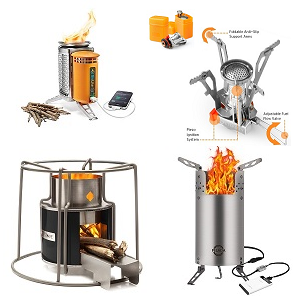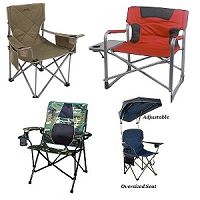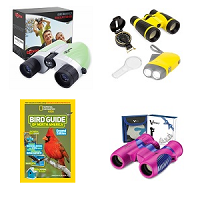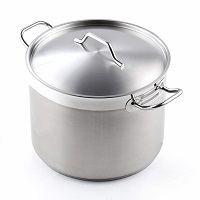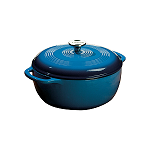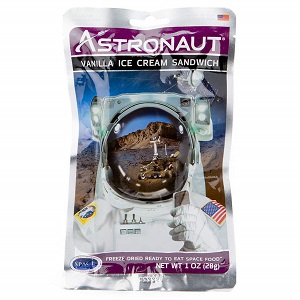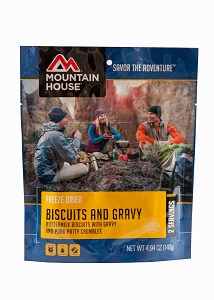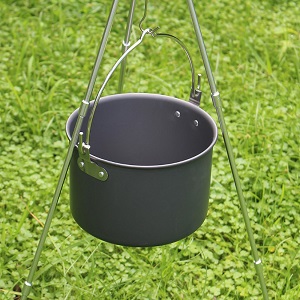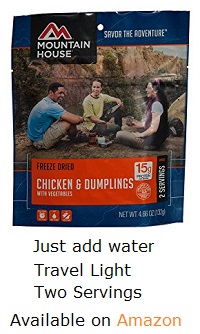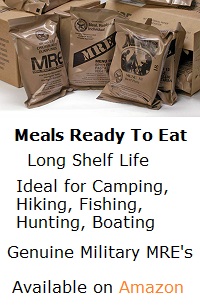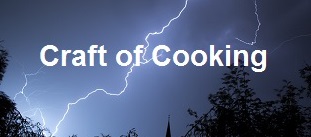
Home | Listed in Category: Cooking, Camping, Hiking, Backpacking Food
Hiking, Backpacking, Camping Food
March 17, 2025 - Camping food needs to taste good, be quick to cook, easy to prepare and to be lightweight plus pack compactly for travel.
Backcountry camping food recipes include ingredients used to prepare food suitable for backcountry camping, hiking and backpacking. These foods differ substantially from the ingredients found in a typical home kitchen recipe. The primary differences relate to campers' and backpackers' special needs for foods that have appropriate cooking time, lightweight for carrying, non-perishable and good nutritional content.
To address these needs, camping food is often made up of either precooked, freeze-dried or dehydrated ingredients. Many campers and backpackers use a combinaton of these easy to transport and prepare foods when enjoying their outdoor adventures.
Other considerations are camping cooking methods. For camping foods with no cooking you just need a method to heat water, where if you are car camping and weight is not as much of a consideration then you might use a camp stove or a campfire to prepare your meals. There are also chemical heaters and solar heaters that are options depending on your camping environment.
If you are car camping at a campsite then you may choose to pre-cook something at home, like a big pot of beef stew, before you go so that you can just warm it on a cook stove or campfire that first day for your evening meal.
You can also have no cooking camping meals no matter if you are hiking the backcountry or sitting around the campfire at a campsite. An example that is quite tasty are the MRE's (military ration self-heating food pouches).
Camping Food
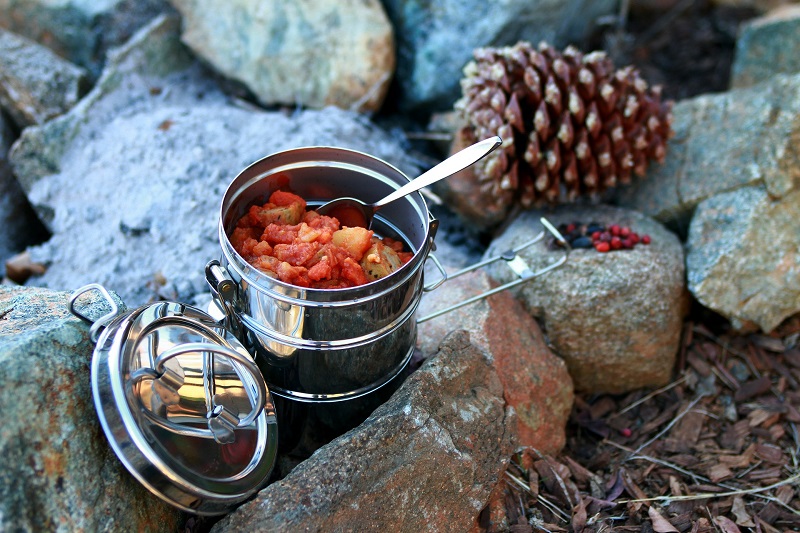
Meal and Ingredient Requirements
Due to the difficulty of carrying large amounts of cooking fuel, campers and backpackers often look for faster and easier ways to have nutritional meals whilst camping or hiking. They would prefer to have meals that can be prepared in a short amount of time (5 to 20 minutes). As a result, many campers prefer a "just add boiling water" method of cooking. Others prefer to have a little higher qualtiy meal even though the method of cooking is more involved. The amount of cooking time can be disregarded if outdoor adventurers are able to cook over a campfire, however, one needs to consider the possibility of a burn-ban being in place where you plan to camp or, the trouble to build a fire and the weight of cooking pots and utensils that would have to be transported.
Shelf Stability>
Camping foods are often shelf-stable, in other words, they require no refrigeration. Campers and hikers may be outdoors for days or weeks at a time and will often pack food for the entire trip. Campers will sometimes take fresh food that can be consumed in the first day or two of a hike. They usually will not risk carrying perishable food beyond that timeframe. Campers hiking in the snow or other cold contitions or, campers with access to a cold water source, may be able to store perishable food in the snow or, secured in a bbag and kept in the cold water, to act as a refrigeration source.
Backpackers must carry everything they need with them so they require all of their gear and food to be as lightweight as possible. For this reason, campers often use freeze-dried and dehydrated meals and ingredients. They may also choose to take a pouch of something like tuna which has a high water content with them as a treat.
Nutrition Content
Climbers, backpackers, canoeists and other outdoor adventurers often cover many miles everyday consuming thousands of calories to keep their energy level high. Backpackers require higher sodium levels and an average of 560 calories per hour[1]. Because of the high levels of nutritional burn and emphasis on packing weight, backpackers monitor the ration of calories-to-ounce that their food they carry with them provides. To ensure that they are carring foods with them that will keep their bodies properly nourished, campers and hikers must pay close attention to their meal plans for the trip.
Ingredients
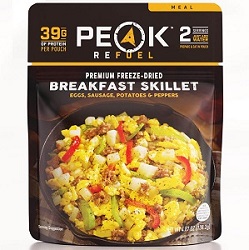 To prepare meals that work well while camping or hiking outdoors, a variety of techniques are used. Campers are advised to prepare meals that are made of easy to prepare ingredients.
To prepare meals that work well while camping or hiking outdoors, a variety of techniques are used. Campers are advised to prepare meals that are made of easy to prepare ingredients.
Freeze drying requires the use of heavy equipment and is not something that most campers or backpackers are able to do on their own. Freeze-dried ingredients are often considered better by campers ecause they rehydrate at camp faster and retain more flavor than their dehydrated counterparts. Freeze-dried ingredients take so little time to rehydrate that they can often be eaten without cooking. Freeze-drying locks in the freshness, vitamins, color, nutrients and scent of fresh frozen foods while providing the shelf-life convenience of canned and dehydrated foods.
Campers don't have to compromise taste and nutrients for lightweight and convenience.
Dehydrated Meals and Ingredients
Dehydrating food can reduce the weight of the food by sixty to ninty percent by removing water through evaporation. Some foods, such as onions, peppers and tomatoes[2][3] dehydrate well. Dehydration often produces a more compact, yet slightly heavier, end result than freeze-drying food.
Full meals or individual ingredients may be dehydrated. Dehydration of individual ingredients allos the flexibility to cook different meals based on available ingredients, where precooked and dehydrated meals offer greater convenience. Several online grocery stores offer dehydrated foods. A "Fork in the Trail" and "Another Fork in the Trail" are good backcountry cookbooks that focus on dehydrating full meals. Both can be found online at Amazon.com.
Campers sometimes use surplus military meals. Meals Ready-to-eat (MREs). These meals contain precooked foods in retort pouches. A retort pouch is a plastic and metal foil laminate pouch that is used as an alternative to traditional industrial canning methods.
Final Common Camping Foods Ingredients
The final type of ingredients available to campers are those that are typically found in your local grocery store. Some examples of these types of food are grits, polenta, quick cooking pasta (such as angle hair pasta), instant potatoes, ramen, dried soups, pouch meats such as tuna, SPAM, salmon or jerky.
In using these common ingredients, campers often repackage them to reduce packaging or combine them into a meal-ready package, thereby reducing prep-time at the campsite. The important feature of these types of ingredients is the cook-time. A cook time of 20 minutes is about the longest amount of cook-time that most campers will tolerate. They are on the trail or at the campsite to enjoy other things so spending a lot of time cooking is not the way they want to spend their trip.
No Cooking Camping Food Ideas
If you want to play all day and not spend your time cooking you can have no-cook camping meals that are tasyt, fun and healthy to eat.
Here is a list of some camping food ideas with no cooking:
- Peanut Butter and Jelly or Raisens Sandwich
- Sandwich with slices of apples on peanut butter and topped with chocolate chips.
- Canned tuna, with sliced tomatoes and Ritz crackers.
- If you have access to hot water then Instant Oatmeal Cups with some added strawberries or blueberries.
- BLT with pre-cooked bacon, fresh tomato and lettuce.
- If you have access to a cooler or RV fridge then you can have tuna salad, boiled egg, ham salad sandwiches and well as pre-made salads.
- Military Ration Self-Heating Food Pouches are really quite tasty.
Backcountry Cooking Methods
There are several different cooking methods available to campers. Which you choose will depend a good bit on where you plan to be cooking and availability of fuel either at the location or, that you can easily transport with you to the campsite.
There are a large variety of good camping stoves on the market today. There features range from being very lightweight to using very little fuel. Camp stoves have several advantages over a campfire. Since most camping stoves have an adjustable heat source, they can be much easier to use than a campfire. The ability to adjust the flame to reduce your pot from a boil to a simmer is a stove feature that many campers consider invaluable. Campfires can take a long time to get started to a point where they are suitable for cooking over. Since a cook-stove can be ready in minutes this is an advantage for many campers and backpackers.
As far as camping cookware, never place your stainless steel or aluminum cookwware directly in a fire. These types of metal have a melting point that is much less than the temperature that a fire will produce. Always use a pan or pot that has a metal handle. Rubber coated or plastic handles can melt when used over an open fire. If you are hiking or camping alone you might enjoy a camping cookware mess kit. It will usually be made up of a fry pay, cooking pot and metal plate and will come in a nylon mesh cover, all sized for your solo outdoor adventure. These mesh kits will fit into your backpack, bag or survival gear for easy carrying.
Plan your camping cookware based on such things as whether you are cooking at a campsite with your vehicle nearby or far into the backcountry plus, how many people you will be cooking a meal for. If you are car camping then you can deal with a little heavier all-around cookware set. If you are on a backcountry hiking excursion then the weight of your cookware is of paramount consideration. Most meals are centered around boiling water and you many not need a pot or pan.
If you are car camping then you would want to consider cast iron pots and pans. It lasts a lifetime, cooks evenly, is naturally non-stick and great for cooking or baking over stove or campfire. It is heavy and certainly not something your would want to use when backpacking.
You will want an assortment of pots, lids, skillets, utensils, bowls, plates and cups or mugs. Again it will depend on how many campers you are feeding and whether or not you are car camping or hiking the backcountry.
Wilderness areas can often have a burn-ban in place, prohibiting campers from starting a fire. So, if you rely on the campfire method as your only source for preparing meals then you could find yourself without hot food on your trip. Pots and pans can become darkened with soot wen cooking over a campfire. Soot can e extremely difficult to remove and if left on the pan can easily rub off onto clothing or the inside of your backpack. Some campers coat their cooking pans with cooking oil to make it easier to remove soot.
When using a campfire for cooking campers do not have to carry the extra weight of a cook stove. Another advantage to campfires is that they provide a great amount of warmth while cook stoves prove none. On those cold, wintery days a campfire can be welcome for more than just cooking. Leave No Trace discourages the use of a campfire as a source of heat. Campers making a campfire in the same location time after time can deplete the availale wood in the area, thereby impacting the natural habitat of the animals. Whether using a camp stove or a campfire many campers tend to leave food scraps around the cooking area which could attract animals to the campsite.
Some camping food is ready to eat and may be warmed using chemical heaters, such as the flameless heaters used in MREs(Meals Ready to Eat) or, a self-contained chemical heater built into the food packaging itself[6]. Self-heating food packaging is a type of packaging which has the ability to heat food contained without external heating sources or power. To heat the food the consumer has to simply press a button at the bottom of the package. The compact modular heat source in the self-heating food packaging is just the size of a small tea candle.This food-safe material which is utilized in self-heating packaging not only provides high energy content but also a controlled rate of thermal emissions, i.e., heat. The end result is the consumer gets the food heated in hand within less than two minutes. The material used in self-heating food packaging is safe to use with no liquid spills, no smoke and flames and is also easy to hold.
Solar cooking provides a clean and safe alternative to a campfire. Using solar cookers is inexpensive and easy to do since they do not require fuel to work. Solar cookers preserve wood from our forests, which overall helps the environment. You can find solar cookers, solar overn and solar grills on the market today. Solar ovens basicly use an insulated box to retain heat, along with a set of reflective panels to concentrate solar energy. These insulated boxes are well suited for baking. Solar ovens will typically reach temperatures in the region of 400 degrees F. If using a solar oven then also consider using dark colored akeware, which absorbs and retains heat better than light-colored pans and casserole dishes. Solar ovens heat up slowly, so plan your cooking around your activities. They are perfect for setting up your meal, forgetting about it for hours and coming back to a delicious, hot meal.
"This post may contain affiliate links for which I could receive a commission."
Camping Food Contents
Meal and Ingredient Requirements
References
- "My Food Diary - Healthy Hiking for Weight Loss"
- "Camping Foods FAQs"
- "Grow Veg Find Details of Dehydrating Tomatoes"
Lightweight Large 5 Quart Outdoor Cooking Pot Available on Amazon
On those chilly evenings a nice hot pot of stew or soup while camping or backpacking outdoors tastes really good. This 5 quart large lightweight outdoor cooking pot is just the thing to let you prepare and enjoy that tasty meal. It is durable, easy to clean and the handle folds down for packing. Don't go hungry while camping when you can easily have a good hot meal.
Read Reviews and Buy Online At: Amazon.com
Camping Food Ideas
Vegan Recipes for the Backcountry
Easy Campfire Cooking
